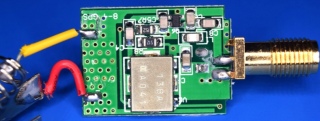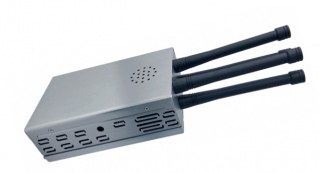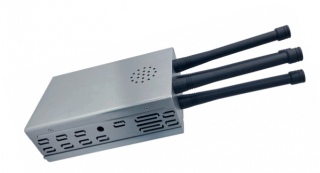Recognizing the Presence of a Cell Phone Jammer
Detecting whether a cell phone jammer is being used can be challenging, but there are several signs and methods you can use to identify potential jamming activity:
Signs of Cell Phone Jamming
Methods to Detect Cell Phone Jamming
Professional Detection Equipment
If you suspect persistent jamming and need a reliable method to detect it, consider the following professional equipment:
RF Detectors: These devices can detect a wide range of frequencies and are useful for identifying jamming signals.
Spectrum Analyzers: These provide a visual representation of the frequency spectrum, allowing you to see the presence of jamming signals.
Cell Phone Signal Monitoring Systems: Specialized systems designed to monitor and detect disruptions in cellular signals.
Preventive Measures
Conclusion
Detecting a cell phone jammer involves observing sudden and consistent disruptions in cellular service, using signal detection tools, and employing professional equipment if necessary. If you suspect jamming, it's important to take appropriate measures to confirm and report the activity, as the use of jammers is illegal in many countries and poses significant risks to safety and communication.
Signs of Cell Phone Jamming
- Sudden Signal Loss: If multiple cell phones in the same area suddenly lose their signal and cannot connect to the network, this could indicate the presence of a jammer.
- Poor Call Quality: Frequent call drops, inability to make or receive calls, or severe degradation in call quality in an area where you usually have good reception can be a sign of jamming.
- Interrupted Data Services: Slow or nonfunctional data services (such as internet browsing, messaging apps, and email) in areas where they typically work well.
- No WiFi Connectivity: If WiFi networks are also affected and users are unable to connect, this could be due to a jammer targeting multiple frequencies.
- Consistent Pattern: If the signal issues occur at specific times or locations consistently, it may suggest intentional jamming.
Methods to Detect Cell Phone Jamming
- Check Multiple Devices: Verify the signal on multiple cell phones from different carriers. If all devices show similar issues, it's likely not a carrierspecific problem.
- Use Signal Detection Apps: There are apps available that can analyze the signal strength and quality. Sudden drops or patterns in the signal may indicate jamming.
- Professional Signal Detectors: Invest in a professional signal detector or spectrum analyzer. These devices can detect jamming signals by analyzing the radio frequency spectrum and identifying unusual or strong signals in the cellular bands.
- Contact Your Carrier: Reach out to your mobile carrier's customer service. They may have tools to detect jamming activities and can investigate the issue.
- Listen for Interference: Some jammers may emit a faint buzzing or humming noise, although this is not always the case.
Professional Detection Equipment
If you suspect persistent jamming and need a reliable method to detect it, consider the following professional equipment:
RF Detectors: These devices can detect a wide range of frequencies and are useful for identifying jamming signals.
Spectrum Analyzers: These provide a visual representation of the frequency spectrum, allowing you to see the presence of jamming signals.
Cell Phone Signal Monitoring Systems: Specialized systems designed to monitor and detect disruptions in cellular signals.
Preventive Measures
- Shielded Areas: Create shielded areas where cell phone signals are not required, using Faraday cages or signalblocking paint. This prevents external signals from being jammed.
- Secure Communication Channels: Use landlines or wired internet connections for critical communications that cannot be interrupted by signal jammer.
- Legal Action: Report any suspected jamming activity to the relevant authorities, such as the FCC in the United States. Jamming devices are illegal, and authorities can investigate and take action against offenders.
Conclusion
Detecting a cell phone jammer involves observing sudden and consistent disruptions in cellular service, using signal detection tools, and employing professional equipment if necessary. If you suspect jamming, it's important to take appropriate measures to confirm and report the activity, as the use of jammers is illegal in many countries and poses significant risks to safety and communication.









